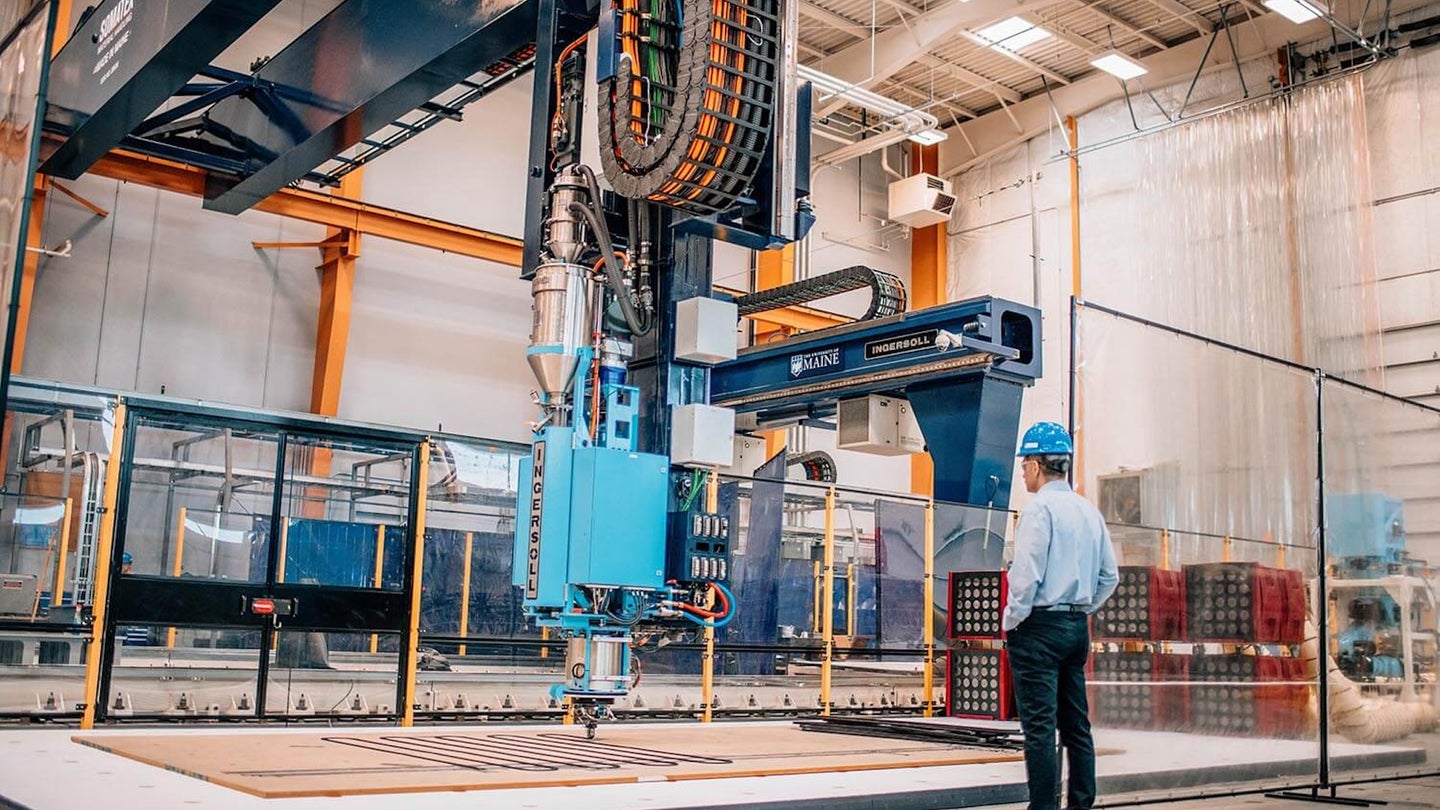Makers of the world’s largest 3D printer just beat their own record
Factory of the Future 1.0 can construct entire homes out of sustainable polymer materials.

After a five-year reign, the world’s largest 3D printer located at the University of Maine has been usurped—by a newer, larger 3D printer developed at the same school.
At a reveal event earlier this week, UMaine designers at the Advanced Structures & Composite Center (ASCC) showed off their “Factory of the Future 1.0,” aka the FoF 1.0. At four times the size of their previous Guinness World Record holder from 2019, MasterPrint, FoF 1.0 is capable of printing 96-by-32-by-18-foot tall structures and objects. Such sizable creations also require an impressive amount of building materials, however. According to its creators, FoF 1.0 can churn through upwards of 500-pounds of eco-friendly thermoplastic polymers per hour.
[Related: 3D printers just got a big, eco-friendly upgrade (in the lab)]
Global construction projects generate around 37 percent of all greenhouse gas emissions, mostly from the carbon-heavy production of aluminum, steel, and cement. Transitioning to more sustainable architecture and infrastructure projects is a key component of tackling climate change, spurring interest in massive 3D printer endeavors like FoF 1.0.
But just because there’s a new printer on the block doesn’t mean UMaine’s previous record-holder is obsolete. Designers created FoF 1.0 to print in tandem with MasterPrint, with the two machines even capable of working together on the same building components.
ASCC researchers and engineers aim to utilize these industrial-sized 3D printers to help construct some of the estimated 80,000 new homes needed in Maine over the next six years. FoF 1.0’s predecessor, MasterPrint, has already helped build the surprisingly stylish, sustainable, 600-square-foot BioHome3D prototype a few years back.

“It’s not about building a cheap house or a biohome,” ASCC director Habib Dagher said at this week’s event. “We wanted to build a house that people would say, ‘Wow, I really want to live there.’”
With FoF 1.0’s help, those plans could potentially expand to encompass whole neighborhoods. According to Engadget’s calculations, the new machine could make “a modest single-story home in around 80 hours.”
Of course, such biofriendly projects don’t only catch the eye of sustainable architects. Funding for FoF 1.0 came in part from contributors such as the Department of Defense, as well as the Army Corps of Engineers. UMaine’s announcement also notes these backers hope to harness such machines for other projects, including “lightweight rapidly deployable structures and vessel technologies.”
Going forward, ASCC researchers hope to experiment with additional bio-based polymer sources, particularly wood residuals from Maine—which just so happens to be the country’s most forested state.
